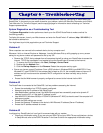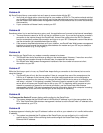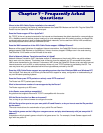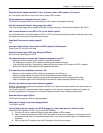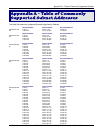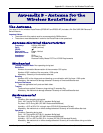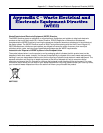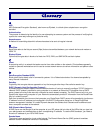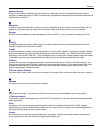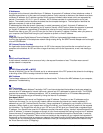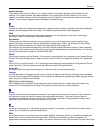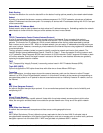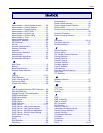
Glossary
Multi-Tech Systems, Inc. RouteFinder SOHO RF820/RF820-AP & RF830/RF830-AP User Guide (S000399E) 86
Glossary
A
AES
AES (Advanced Encryption Standard), also known as Rijndael, is a block cipher adopted as an encryption
standard.
Authentication
The process of determining the identity of a user attempting to access a system and the process of verifying that
a particular name really belongs to a particular entity.
Asynchronous
A method of transmitting data which allows characters to be sent at irregular intervals.
B
Baud Rate
Baud Rate refers to the bits per second (Bps) that are transmitted between your network device and modem or
ISDN TA.
Blocked Cipher
Cipher that encrypts data in blocks of a fixed size: DES, IDEA, and SKIPJACK are block ciphers.
C
Client
A computing entity in a network that seeks service from other entities on the network. Client software generally
resides on personal workstations and is used to contact network servers to retrieve information and perform other
actives.
D
Data Encryption Standard (DES)
Block cipher that is widely used in commercial systems. It is a Federal standard so it is deemed acceptable by
many financial institutions.
Data Key
Crypto key that encrypts data as opposed to a key that encrypts other keys. Also called a session key.
DHCP (Dynamic Host Configuration Protocol)
A protocol that was made to lessen the administrative burden of having to manually configure TCP/IP Hosts on a
network. DHCP makes it possible for every computer on a network to extract its IP information from a DHCP
server instead of having to be manually configured on each network computer. The DHCP server built-in to your
RouteFinder allows every computer on your network to automatically extract IP information from the RouteFinder.
Why is it called Dynamic?
Each time a network client turns on their computer your RouteFinder DHCP server will automatically give them an
IP address from the IP address pool configured in the DHCP Configuration dialog box in RouteFinder Web
browser management interface. It is called Dynamic because the address that is issued could be different each
time a computer connects to the network.
DNS (Domain Name System)
A DNS Server can be thought of as the computer at your ISP whose job is to take all the URLs that you type into
your web browser and translate them to their corresponding IP address. To use the DNS translator, you need to
know the IP address of your ISP’s DNS Server.
Domain Name
The textual name assigned to a host on the Internet. The Domain Name Service (DNS) protocol translates
between domain names and numerical IP addresses.



